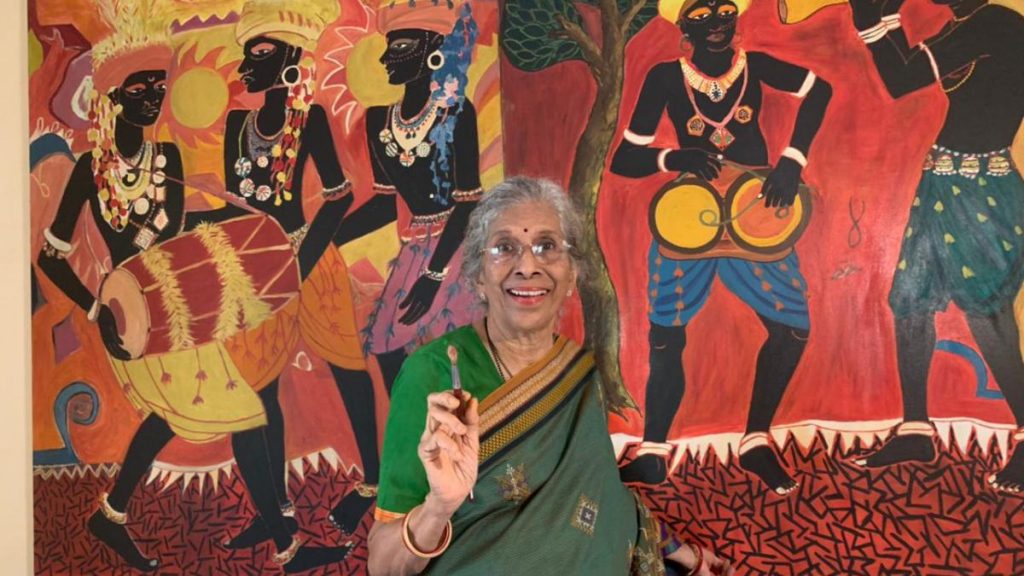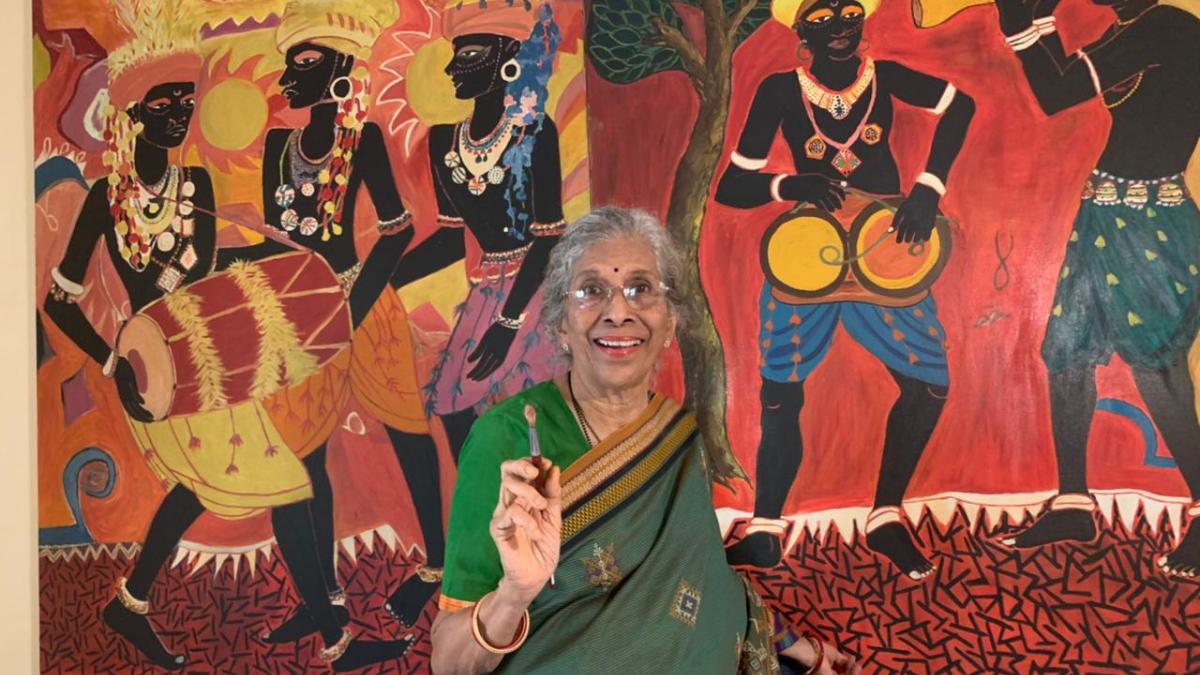
Paints, canvasses and brushes have replaced the dull sight of forlorn roads and anxiety-inducing news reports in Lata Chaudhry’s daily routine. The 84-year-old Bandra resident, who suffers from advanced-stage Alzheimer’s and dementia, spends long hours painting village scenes and figures. Her focus is now fixed on depicting the Warli tribe that lives in the mountains along the Maharashtra-Gujarat border. This activity is the only proverbial silver lining in the day of the octogenarian who was getting adversely impacted by news of disease, suffering and death and the soundless lanes during the lockdown. In a bid to add a dash of hope and colour into her life, her son Paresh brought in a set of canvasses and paints a few months ago and urged Chaudhry to rekindle her long lost love for painting. Her family claims that ever since she picked up her paint brushes, “there has been no looking back”.
Like Chaudhry, several people are finding solace in different forms of art that help relieve anxiety. From painting and embroidery to knitting and origami, activities that requires concentration and give the doer a feeling of having created something new, are being used to help soothe frayed nerves. “When you are creating art, you are completely one with yourself. There is a feeling of fulfilment because you are creating something from scratch and to watch your creation come to life is very therapeutic,” says Akshita Gandhi, artist and founder of the Dua Foundation.
As the number of infections and deaths soar dangerously, an increasing number of people are discovering how sketch pens, crayons, pencils and water colours can alleviate anxiety. Even as she anxiously awaited updates from the hospital on the health of her Covid-infected husband and parents, Aisha Dhuru, 38, ordered knitting needles and wool, and “furiously knitted all day”. “It requires total attention and focus and that helped me block negative thoughts which were leading to severe anxiety and sleeplessness,” she says.
Art has, for long, been used by alternative healing practitioners to work with patients working through mental health issues. And just as sketching can help people pour their feelings and emotions on paper, colours have the ability to evoke emotions. “If you are going through some kind of physical pain, surround yourself with a lot of green colour. It is believed that you start to heal faster as green symbolises life and nurturing,” says Gandhi. The concept relates to the colours of the energy fields in the body that are believed to play a role on mental and physical health.
With the pandemic raging across the country and people losing both loved ones and livelihoods, anxiety levels are bound to be on the rise, which, if left unchecked, can lead to severe mental ailments. “Breathlessness, sleeplessness, cold sweat, depression or palpitations are all a part of what we are experiencing around us today. That’s where art can step in. Spending even 30 minutes every day on creating something can alleviate stress and help combat anxiety because it distracts you from the negativity and immerses you in a happy feeling,” says Roohi Jain, a counsellor who uses art and music for healing patients.
Noting this demand for a creative activity, several brands have launched art kits that provide the necessary tools and activity sheets for people to revisit art classes from their school days. But as Jain explains, art as a healing tool does not need you to create picture-perfect paintings. Scribbling, doodling, sketching or abstract strokes of paint on canvas or paper can still be therapeutic.

发表回复